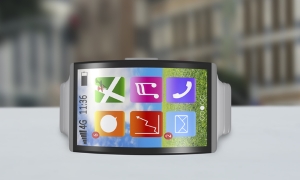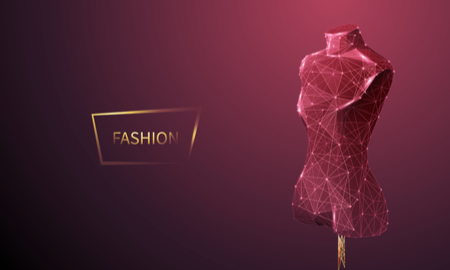Sign up for our free daily newsletter
YOUR PRIVACY - PLEASE READ CAREFULLY DATA PROTECTION STATEMENT
Below we explain how we will communicate with you. We set out how we use your data in our Privacy Policy.
Global City Media, and its associated brands will use the lawful basis of legitimate interests to use
the
contact details you have supplied to contact you regarding our publications, events, training,
reader
research, and other relevant information. We will always give you the option to opt out of our
marketing.
By clicking submit, you confirm that you understand and accept the Terms & Conditions and Privacy Policy
When Coco Chanel said: “Fashion is not something that exists only in dresses. Fashion is in the sky, in the street, fashion has to do with ideas, the way we live, what is happening,” little did we know how broadly today’s technology would reach.
As brands continue to integrate technology in new ways, the legal framework is dramatically expanding to address changing standards in areas including intellectual property, data privacy and consumer protection.
Legally speaking
One of the most-watched cases – the Hermes-Rothschild/MetaBirkin matter – is something of a watchword for the luxury world, where ultimately precedent was set for applying pre-existing trademark rights in the physical world to goods in the virtual world. It also made brands conscious of new age tech threats to existing rights and prompted a re-examination of whether their trademarks have comprehensive protection. Across the globe, including in India, there is a growing trend of brands seeking to register their trademarks in the virtual world, with several jurisdictions including the UK and Australia developing guidelines to help with filing trademarks for virtual goods.
Data privacy issues are front and centre today because of trends like virtual try-on options, augmented reality (AR) stores and brand-fostered personalised style suggestions. Wearable technology and smart fashion collect biometic information, health metrics and location data, which raise critical privacy concerns.
To navigate these challenges, countries across the globe have promulgated legislation to protect personal data – the EU-GDPR is a prime example. In India, the enforcement of the Digital Personal Data Protection Act notified in August 2023 is much anticipated. The government is finalising the rules to the act, which are expected to be announced shortly and will comprehensively address digital consumer engagement and data privacy issues.
Tech trends overview
Solving these new legal issues is a top challenge for luxury brands and their lawyers. Some of the industry’s most innovative developments include:
- The absence of in-person shopping during the pandemic forced brands to relook at means of communication and introduce novel ways of consumer engagement through virtual stores and immersive experiences. Taking branding digital meant virtual fashion shows, online only products, digital in-store experiences of try it and buy it (extending from clothes to makeup to eyewear) and digital assets linked to NFTs, all of which quickly became a revenue stream.
- The global wave of conscious consumerism, sustainability and supply chain ethics has seen the introduction of artificial intelligence-led initiatives such as digital product passports (DPPs) in the EU, implementation of which is expected in 2026. DPPs may be attached to any product and will contain data on a product’s lifecycle, giving consumers access to details on supply chain, use of material and the overall environmental impact.
- Though AR and virtual reality (VR) technologies have existed for a few years, their use in the wearables space has been relatively untapped, but is now picking up. From yoga pants that target small vibrations on the body part needing refinement during a yoga pose, to swimsuits sending alerts on higher UV levels demanding additional sunscreen protection, wearable tech is becoming an integral part of our daily lives. Ray-Ban’s Meta Smart Glasses, with a built-in camera that enables users to live stream on social media, are taking the market by a storm, as is Gucci x Oura’s luxury health-tracking smart ring. In these ways, style and innovation are fusing together. And from a branding and commercial standpoint, this has opened possibilities that are revolutionising both the tech and fashion industries.
- With newer modes of engagement, brands are establishing a stronghold in the Gen Z and millennial demographics. For instance, to create excitement for the addition of B27 sneakers to its menswear lineup, Christian Dior partnered with Snapchat to create a filter allowing people to try on six pairs of B27 sneakers in AR. This Social AR-lens filter generated more than 2.4 million views. Adidas designed a VR campaign to promote its running shoes by providing users with an immersive running experience. Nike is also using AR, including its ‘Nike Fit’ function, which allows consumers to virtually try on shoes, and its ‘Nike By You’ feature, which allows customisation of sneakers through an app. Reportedly, than two million designs were created within the first year of launch of this feature.
- Another technology impact on fashion brands is the creation of immersive videos that go beyond traditional advertising models. Technology has made it possible to use 3D renderings and mixed reality in advertisements. For instance, jumbo Jacquemus Le Bambino bags travelling on wheels down the streets of Paris. In a similar vein, adverts were developed showing London’s Tower Bridge draped with Nike’s and Chelsea football team’s new jersey, and L’Oréal Paris’s lipstick painting the town red. These larger than life impressions are particularly effective at garnering interest on social media.
- And finally, Coco Chanel’s prediction has come true – fashion’s rising interest in VR makes ‘fashion in the sky’ possible. For instance last December, Amsterdam’s digital fashion house The Fabricant announced it was going to send its imaginative DEEP collection to the Moon for the MoonMars Museum launch in August this year. The museum is based on the idea of sending art to the Moon within a gallery-like setup focusing on art and space education. As part of its core mission, evidence of the artwork’s lunar presence will be tethered to an NFT contract, and collectors of the DEEP collection will gain exclusive access to mesmerising visuals and AR wearables such as AR face filters, epitomising Fabricant’s dedication to digital fashion’s adaptability and innovation.
Without question, technology is pushing the limits of the law. But the real question is how dramatically the law will continue to change to protect brands and their consumers.
Radha Khera is a managing associate at Indian law firm Remfry & Sagar. She is an intellectual property and fashion attorney and can be reached at [email protected].
Email your news and story ideas to: [email protected]











